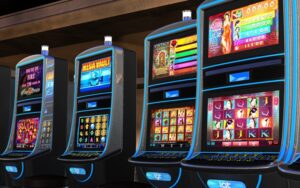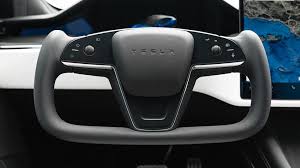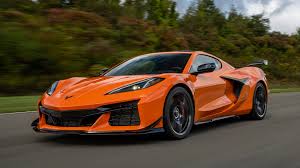The Tesla Yoke Steering Wheel: Upsetting the Driving Experience
Tesla has reliably pushed the limits of car development, and the presentation of the burden directing wheel in its flagship models, like the Model S and Model X, is no exception. The Tesla burden-control wheel has sparked extensive discussion and interest, addressing a huge takeoff from conventional roundabout-directing wheels. This article digs into the plan, usefulness, advantages, and debates encompassing the Tesla Yoke Steering Wheel, investigating how it could impact the eventual fate of driving.
Understanding the Tesla Yoke Steering Wheel
Plan and style
The Tesla Yoke Steering Wheel is portrayed by its special, U-molded plan, which looks like the control burdens tracked down in an airplane. Not at all like traditional round directing wheels, the burden has a level top and base, offering an unhindered perspective on the vehicle’s dashboard and instruments. This moderate plan lines up with Tesla’s advanced styling and centers around improving driver perceivability and collaboration with the vehicle’s connection point.
Usefulness and Highlights
Past its striking appearance, the burden-directing wheel consolidates a few high-level elements. These incorporate touch-delicate buttons for controlling different capabilities, for example, blinkers, headlights, horns, and, surprisingly, the infotainment framework. Furthermore, the burden’s plan is expected to supplement Tesla’s Autopilot and Full Self-Driving (FSD) innovations, giving a more incorporated and consistent driving experience.
Advantages of the Tesla Yoke Steering Wheel
Upgraded Perceivability and Instrument Access
One of the essential benefits of the burden-control wheel is the superior perceivability it offers. The shortfall of the upper piece of a customary directing wheel permits drivers to have an unhampered perspective on the instrument bunch and the street ahead. This can be especially advantageous while utilizing Tesla’s high-level route and driving help highlights, as it diminishes interruptions and improves situational mindfulness.
I worked on driving ergonomics.
The burden-control wheel’s plan is additionally expected to advance better driving ergonomics. By empowering drivers to embrace a “9 and 3” hand position, it means diminishing weariness and further developing control. This hand position is by and large viewed as more secure and more agreeable for lengthy drives, as it limits the burden on the shoulders and wrists.
Consistent Mix with Independent Highlights
As Tesla keeps on propelling its autopilot and full self-driving capacities, the burden-control wheel assumes a vital role in the general client experience. The touch-delicate controls on the burden permit drivers to get to and change independent driving elements without taking their hands off the wheel without any problem. This reconciliation is intended to make the progress between manual and independent driving modes more natural and consistent.
Contentions and Reactions
Expectation to absorb information and client transformation
In spite of its expected advantages, the Tesla burden guiding wheel has confronted analysis, especially in regards to the expectation to learn and adapt related to its utilization. Drivers acquainted with conventional roundabout directing wheels might find the burden’s plan new and testing from the get-go. The touch-delicate buttons, while creative, can likewise be less instinctive than customary controls, expecting drivers to adjust to a better approach for interfacing with their vehicle.
Security Concerns
A few pundits have raised worries about the security ramifications of the burden-directing wheel. In crisis circumstances where fast and exact guiding data sources are required, the eccentric state of the burden might present difficulties. Moreover, the dependence on touch-delicate controls for basic capabilities like blinkers and headlights has ignited banter about their dependability and usability in high-stress situations.
Administrative and Consistency Issues
The presentation of the burden-directing wheel has likewise prompted conversations about administrative consistency. Conventional guiding wheels are intended to fulfill explicit wellbeing guidelines, and any deviation from these standards requires careful assessment. Accordingly, Tesla has needed to address administrative worries and guarantee that the burden-guiding wheel fulfills wellbeing and execution guidelines across various business sectors.
The Fate of the Guiding Wheel Plan
Effect on the Car Business
The Tesla Yoke Steering Wheel is probably going to impact steering wheel configuration patterns inside the car business. As electric and independent vehicles become more pervasive, customary plan components might be rethought to more likely suit the requirements of current driving. Different makers might investigate comparable ideas, consolidating novel directing wheel plans that improve perceivability, ergonomics, and combination with cutting-edge driving advancements.
Potential for Customization and Personalization
One likely road for future improvement is the customization and personalization of guiding wheel plans. As drivers become more familiar with various controlling setups, makers could offer a scope of choices customized to individual inclinations and driving styles. This could include varieties for shape, size, and control designs, permitting drivers to pick the guiding wheel that best suits their necessities.
Coordination with Expanded Reality and High-Level Presentations
As auto innovation keeps on developing, the coordination of increased reality (AR) and high-level showcases could additionally reform the guiding wheel plan. Imagine a burden-control wheel furnished with AR overlays, giving constant data and route prompts straightforwardly in the driver’s view. This could upgrade situational mindfulness and make a more vivid driving experience, lining up with the patterns towards expanded mechanization and network.
Tesla’s Obligation to Development
Pushing Limits and Testing Standards
The presentation of the burden guiding wheel is a demonstration of Tesla’s obligation to push limits and test car standards. By reevaluating basic plan components, Tesla keeps on driving development and making far-reaching changes. While the burden of directing the wheel may not be generally embraced, it addresses a striking step towards rethinking the driving experience for the electric and independent age.
Embracing Criticism and Cycles
Tesla has a background marked by embracing criticism and repeating its plans in light of client encounters. The burden guiding wheel is no exemption, and the organization is probably going to keep refining its plan and usefulness in light of genuine use and client criticism. This iterative methodology guarantees that Tesla stays at the forefront of car development, ceaselessly working on its products to meet the advancing necessities of drivers.
End
The Tesla Yoke Steering Wheel is a strong and disputable development that typifies the organization’s ground-breaking way to deal with car plans. While it presents a takeoff from conventional directing wheels, it offers a few expected benefits, including upgraded perceivability, further developed ergonomics, and consistent incorporation with independent elements. Be that as it may, it likewise faces difficulties connected with client variation, wellbeing concerns, and administrative consistency.
As the auto business develops, the burden of directing wheels might act as an impetus for additional development in guiding wheel configuration, impacting patterns, and empowering producers to investigate additional opportunities. Tesla’s obligation to push limits and embrace criticism guarantees that the burden directing wheel will keep on advancing, forming the fate of driving in electric and independent time.
In summary, the Tesla burden guiding wheel is an image of the organization’s devotion to rethinking the driving experience. Whether it turns into a standard element or stays a specialty choice, it obviously addresses a huge step towards the fate of auto planning and innovation.






























+ There are no comments
Add yours